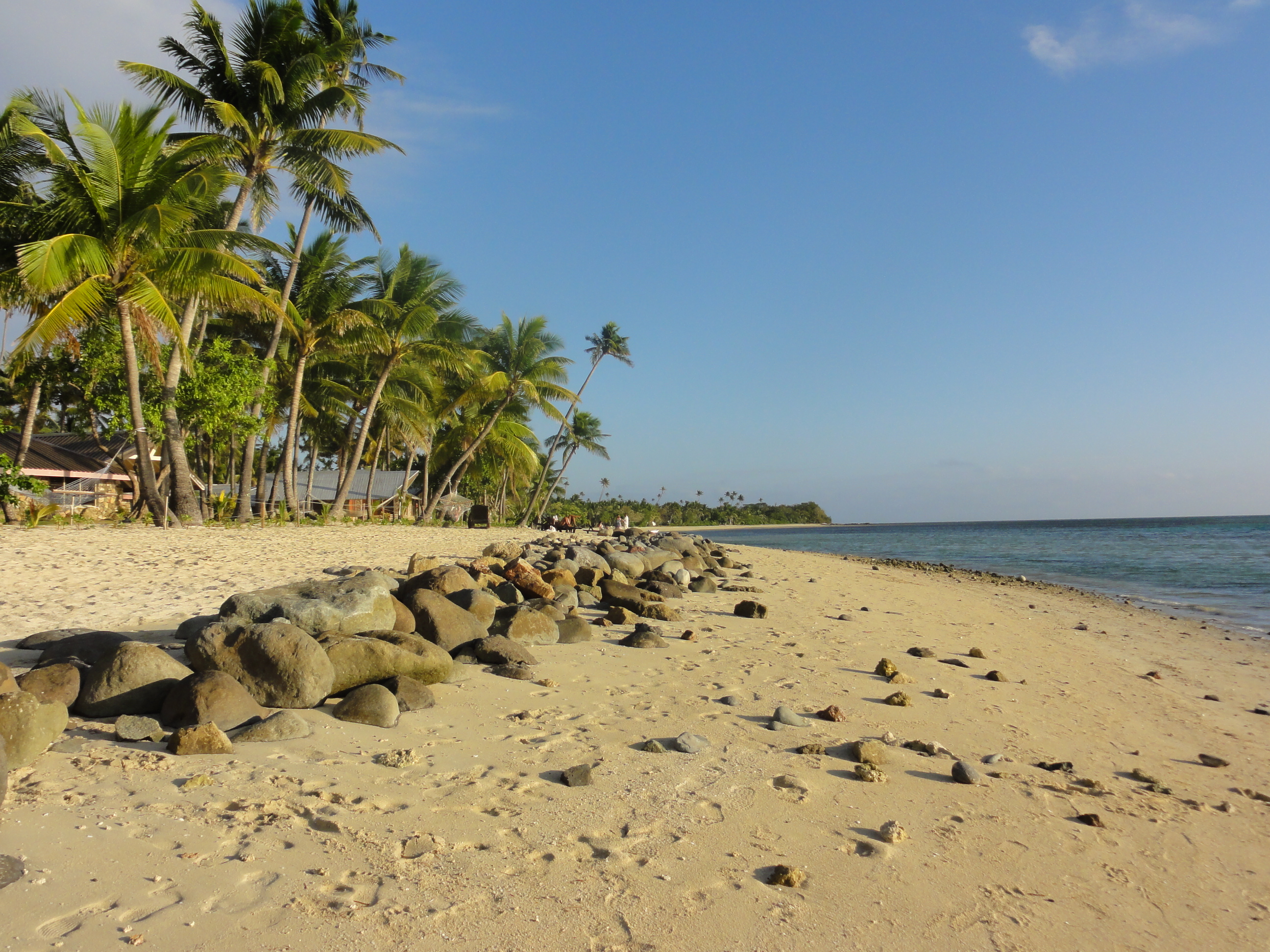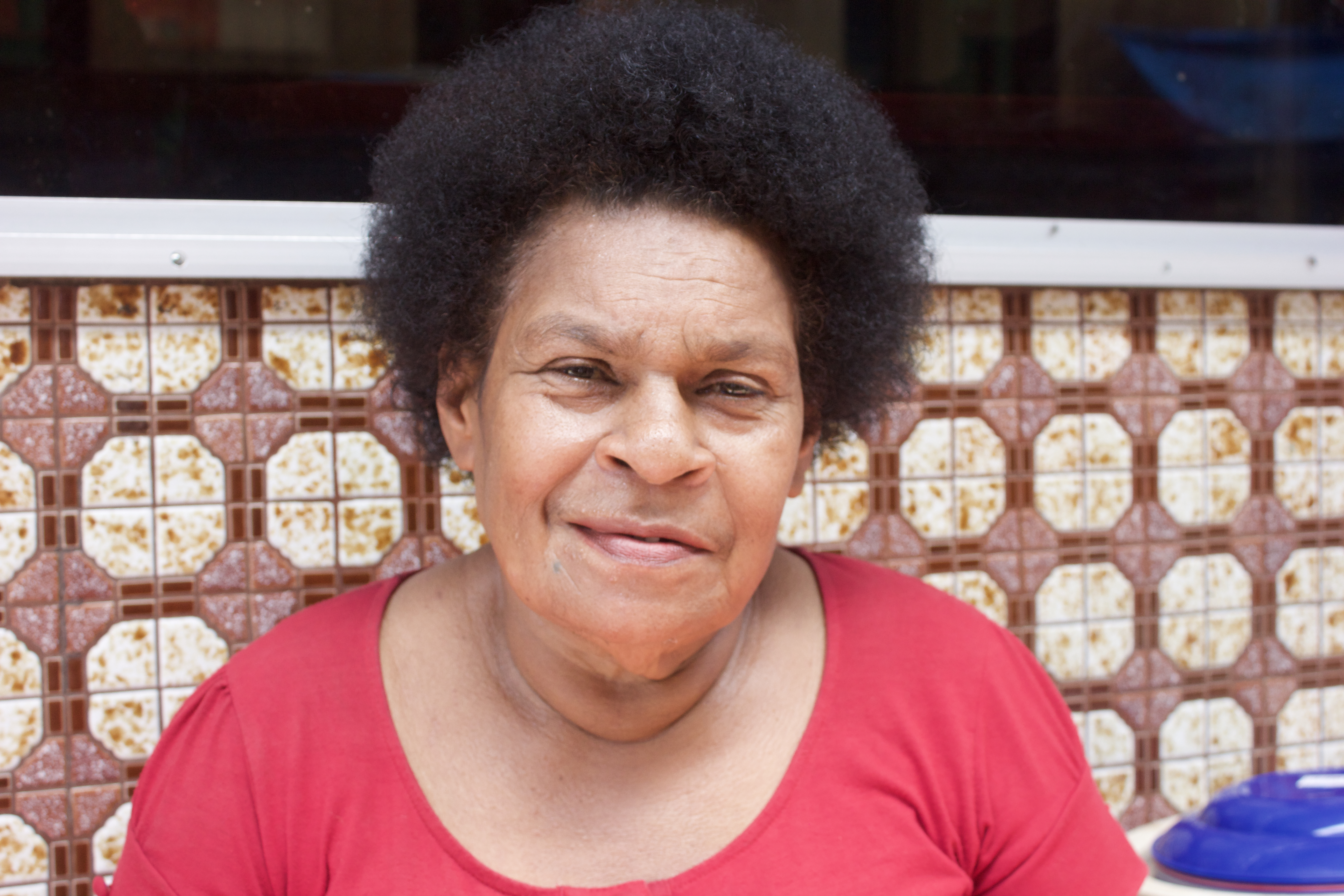

The fertile Sigatoka River valley is known as the “salad bowl” of Fiji, and the fruits and veggies grown there fill municipal markets all across Viti Levu, the country’s biggest island. Farms extend along both sides of the river, from the highlands down to the lively burgh of Sigatoka town. The region has largely been spared from the punishing drought that has beset much of Western Fiji, but the dry season is still hard on the farmers.
Despite Sigatoka’s reputation as the country’s salad bowl, during the dry season, many of the women in the market will need to import food, so they take out small loans from the micro-finance unit of the Fiji Council of Social Services, with an office overlooking the town’s bustling marketplace; they’ll use the loans to make the trip to rainy Suva and buy produce to sell back home.
Click here for more on Fijians’ everyday climate struggles.
On the outskirts of the market, surrounded by friends and piles of mangos, I meet Ruci, a 53-year-old farmer from the village of Nosovotava. She comes down to the market every day to sell corn, cassava, pumpkin, whatever she happens to be growing. Every year around this time, she tells me, the streams and creeks around her farm dry up. Logging near her home has eroded the soil, washed out the roads, and contaminated many of the water sources her village relies on.

(Photo: Kate Wheeling/Pacific Standard)
Recently, the village received three water tanks from the government, which feed about 30 homes. But on more than one occasion, the water authority hasn’t been able to make it to the village to refill them after logging activities left the roads impassable. Access to potable water is Ruci’s biggest concern; in her village, and among her own four children, she’s noticed an increase in diseases and stomach bugs from the lack of clean water.
Silly, 40, sits cross-legged on the road outside the market, leaning against bags of cucumber and yams, with a single pumpkin set out on newspaper next to her. There’s no shade left on that side of the road, and she looks tired as she quietly tells me through a translator that she has seen her crop yields falling for some time. Her latest cucumber crop was only half as big as she expected, thanks to the scarcity of water. Rats have started digging up her yam crop before she can harvest it, and insects are destroying her corn crop more and more.
She makes the three-hour trek from the highlands down to the market twice a week, and the sales she makes there are her main source of income. She’d hoped to giver her kids, ages 10, 12, and 13, some pocket money for a school field trip this week, and to throw a celebration for them when the school year ends the week after that—but she just doesn’t have the funds for either now.





